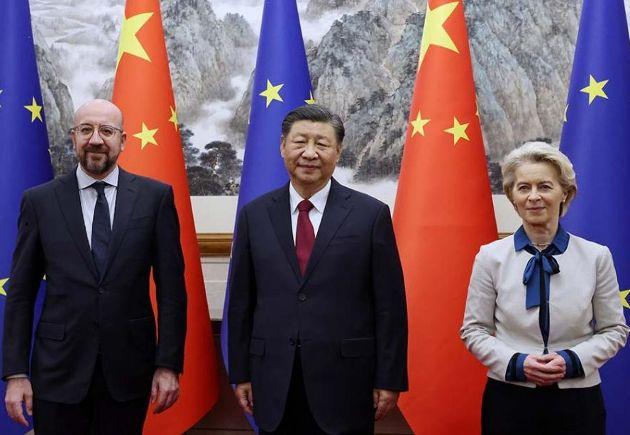After months of anticipation, the much-anticipated EU-China summit series has officially commenced, aiming to revive and recalibrate a complex relationship strained by geopolitical tensions and divergent interests. However, beneath the formal handshakes and staged photo opportunities, fundamental disagreements persist, casting doubt on the prospect of a genuine reset. As both sides seek dialogue amidst mounting challenges-from trade disputes to human rights concerns-the latest meetings underscore that while summits may begin, the deep-seated divisions between Brussels and Beijing remain firmly entrenched.
EU China Summits Commence Amid Persistent Strategic and Economic Tensions
As this year’s EU-China summits commence, the atmosphere is laden with cautious diplomacy, reflecting the complex and often fraught relationship between two economic powerhouses. Despite intentions to rejuvenate dialogue, underlying strategic and economic disagreements continue to hamper any meaningful breakthroughs. Key points of contention include ongoing disputes over trade imbalances, technology transfer concerns, and human rights issues, with both sides maintaining firm yet measured rhetoric. The summits, therefore, serve more as platforms for reaffirming positions rather than signposts of genuine policy convergence.
- Trade and Investment: The EU is pushing for fairer market access amid worries over state subsidies and lack of reciprocity.
- Technological Sovereignty: EU nations express apprehension about reliance on Chinese tech, especially in critical sectors like 5G and AI.
- Geopolitical Frictions: Differences over Taiwan, the South China Sea, and cybersecurity complicate cooperation.
| Topic | EU Position | China Position |
|---|---|---|
| Trade Balance | Calls for reduction of trade deficit and fairer rules | Emphasis on “open markets” but defending domestic interests |
| Technology Sharing | Protect EU firms from forced tech transfer | Promote global tech cooperation but with strategic controls |
| Human Rights | Strong criticism and conditions on cooperation | Rejection of external interference, emphasizing sovereignty |
Diverging Priorities Undermine Efforts to Rebuild Trust and Cooperation
Despite the renewed engagements, fundamental differences continue to hamper meaningful progress between the EU and China. While both sides claim a mutual interest in stabilizing relations, their strategic priorities reveal sharp misalignments. The EU’s focus on human rights, digital sovereignty, and transparency often clashes with China’s emphasis on economic development and regional influence. These conflicting agendas perpetuate a cycle of cautious diplomacy, where gestures of cooperation fail to translate into substantive policy shifts.
Key points of contention include:
- Trade and market access: The EU presses for fairer terms and protection against state subsidies, while China prioritizes control over foreign investments.
- Security concerns: Diverging views persist over technology governance and military presence in the Indo-Pacific.
- Geopolitical alliances: The EU’s alignment with Western partners contrasts with China’s expanding Belt and Road Initiative.
| Priority Area | EU Focus | China Focus |
|---|---|---|
| Trade | Regulatory fairness, anti-subsidy measures | Market control, export growth |
| Technology | Data privacy, 5G security | Innovation dominance, infrastructure |
| Geopolitics | Multilateralism, Western alliances | Strategic expansion, bilateral influence |
Experts Urge Pragmatic Engagement and Clearer Communication to Bridge the Divide
In the face of persistent mistrust and geopolitical tensions, specialists emphasize the necessity for both Brussels and Beijing to adopt more pragmatic approaches in their diplomatic exchanges. Analysts argue that piecemeal agreements and symbolic gestures have done little to resolve the underlying structural disagreements that define EU-China relations. Instead, a shift toward sector-specific cooperation, focusing on mutually beneficial areas such as green technology, trade facilitation, and health security, is projected as a viable strategy to build incremental trust.
Equally critical is the need for clearer and more transparent communication channels to prevent misunderstandings that often exacerbate policy rifts. Experts recommend establishing routine dialogue frameworks at technical and political levels to ensure alignment and quicker conflict resolution. Below is a summary of key recommendations highlighted by policy advisors for actionable engagement:
- Regular bilateral policy reviews: Intense dialogue on contentious issues at all levels.
- Enhanced cultural and academic exchanges: Building soft power understanding to alleviate stereotypes.
- Joint task forces: Addressing trade imbalances and intellectual property concerns collaboratively.
| Challenge | Recommended Approach | Expected Outcome |
|---|---|---|
| Trade Barriers | Targeted sector negotiations | Reduced tariffs and smoother market access |
| Strategic Distrust | Confidence-building measures | Enhanced collaboration on global issues |
| Communication Gaps | Regular intergovernmental meetings | Faster dispute resolution |
To Wrap It Up
As the latest round of EU-China summits concludes, it becomes clear that despite the resumption of dialogue, fundamental divisions persist on key issues such as trade, human rights, and geopolitical alignments. The anticipated reset between the two powers remains elusive, underscoring the complex and cautious nature of their relationship. Moving forward, both sides face the challenge of balancing engagement with strategic competition, leaving the future of EU-China ties open-ended and uncertain.




